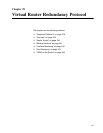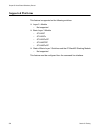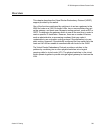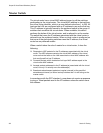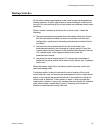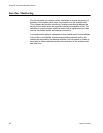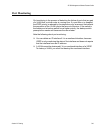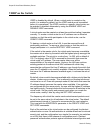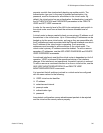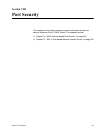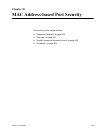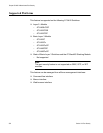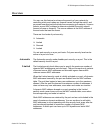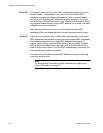AT-S63 Management Software Features Guide
Section VII: Routing 345
prevents a switch from inadvertently backing up another switch. The
authentication type and, in the case of plaintext authentication, the
password, must be the same for all switches in the virtual router. By
default, the virtual router has no authentication. Authentication is set with
the AUTHENTICATION and PASSWORD parameters in the CREATE
VRRP and SET VRRP commands.
In order for the security level of the LAN to be maintained, each switch in
the virtual router must have at least the minimum allowable level of
security.
A virtual router is always created to back up one primary IP address on all
the switches in the virtual router. Up to 16 secondary IP addresses can be
backed up by the same virtual router, as long as they are compatible with
the IP address and mask associated with the Ethernet interface over which
the IP address of the virtual router is operating. Such secondary
addresses must be added to all the switches in the virtual router. The
virtual router’s primary IP address cannot be deleted. To add or remove
secondary IP addresses, use the ADD VRRP IPADDRESS and DELETE
VRRP IPADDRESS commands.
A monitored interface is one that the virtual router is dependent on for full
operation. VRRP is informed if the operational status of the interface
changes. If the interface is not operational, the switch’s priority is reduced.
To add or remove a monitored interface to or from a virtual router, use the
ADD VRRP MONITOREDINTERFACE and DELETE VRRP
MONITOREDINTERFACE commands.
It is important that all switches involved in a virtual router be configured
with the same values for the following:
VRRP virtual router identifier
IP address
advertisement interval
preempt mode
authentication type
password
Inconsistent configuration causes advertisement packets to be rejected
and the virtual router cannot perform properly.



